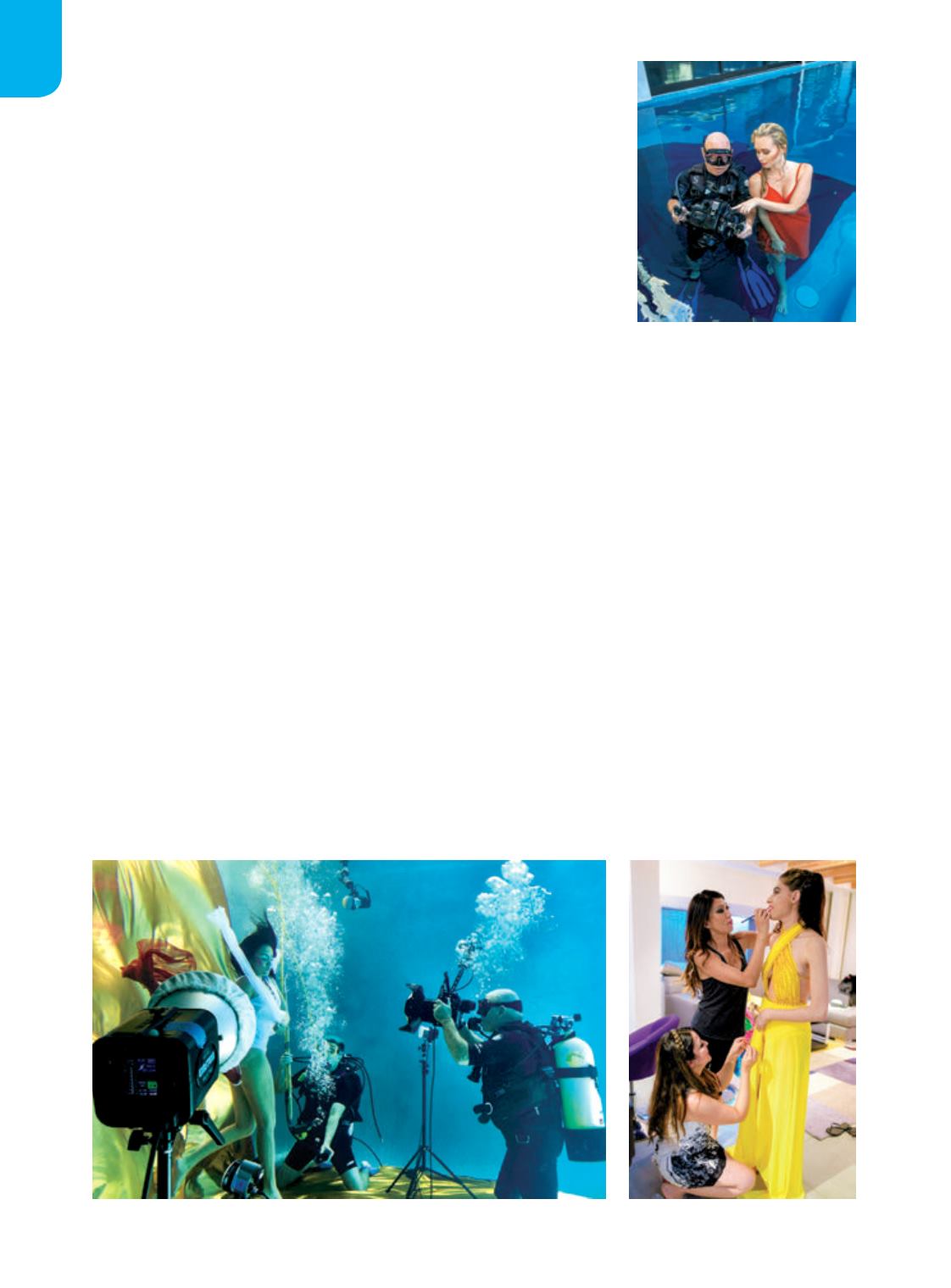

IMAGING
PHOTO TECHNIQUES
100
|
WINTER 2017
The safety diver should keep the regulator close
to the model without getting in the frame. I always
use a hookah as the model’s air source rather than an
“octopus.” No matter how long the hose, it requires the
safety diver to come too close to the model to provide
air, and they never get out of the frame in time. I zip-
tie the second stage of the hookah to a long pole so the
diver can hand it to the model and remove it quickly.
COMMUNICATION AND PLANNING
A good preshoot briefing is essential. I ensure we’re
on the same page regarding basic scuba hand signals:
OK, not OK, up, down, share air, etc. The “share air”
sign is essential because the model will use it to signal
the safety diver that he or she needs to breathe from
the regulator.
Normally we surface every 5-10 minutes to
regroup, talk about the shots, view images on the
camera LCD and make any needed adjustments.
This is where the photographer needs both great
communication skills and great directing skills. You
are the only one who knows how the images should
look, and it is important to calmly communicate your
wishes to your model.
EQUIPMENT
You can shoot with just about any camera that can be
taken underwater. Most photographers use a housed
digital single-lens reflex (DSLR) camera, but you need
to be able to fire at least one strobe using either fiber-
optic or normal sync cables. Remote strobes can be
fired using long cables or preferably in slave mode.
You should have at least two strobes. I have six Sea
& Sea YS-250 and six Inon Z-240 strobes. I have a
50-foot custom
strobe sync
cord that allows
me to position
my primary
underwater strobe
anywhere in the
pool. If I use a
studio strobe for
surface lighting,
I use a custom cable to fire a studio flash trigger that
stays on the surface in a dry box. Using the kind of
slave trigger device that would be used in a studio
doesn’t work because they are not waterproof. Even if
they were housed they could not transmit through the
water to a bank of topside strobes on deck, hence the
need for a cable to a dry place on deck.
WARDROBE AND MAKEUP
Creative wardrobe can really make a shoot. Often I am
lucky and the model will have designers who are eager
to get underwater images of their designs. But I have
also scoured local fabric stores for colorful pieces to
use during experimental shoots. Cheap wigs, masks
and toys can also be used as props. I even own several
mannequins, which are both great props and good
for lighting practice when no model is available. Try
draping colored fabric in the pool as a backdrop, as
this can add creative interest to the images as well as
giving the illusion that you are not in a pool.
I prefer to use a makeup artist whenever I can — it
can really add to the look. Some models can do their
own makeup, but it’s hard to do touch ups during a
shoot since they are always wet.


















